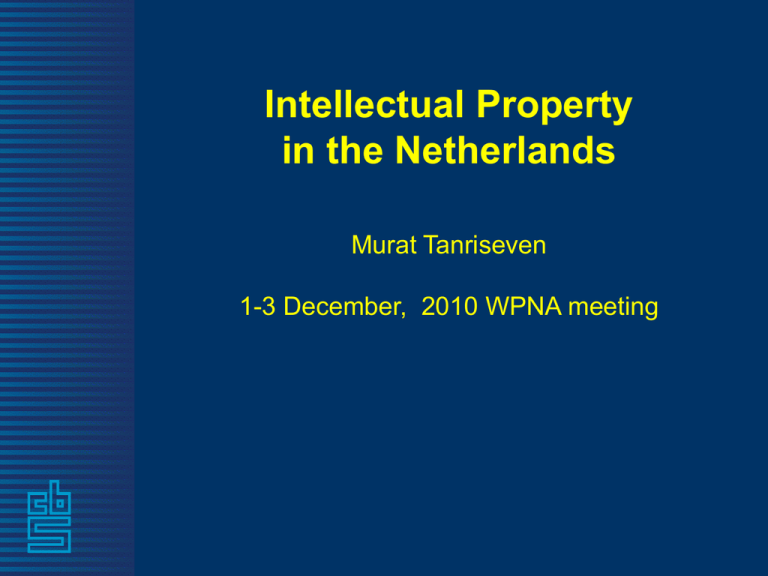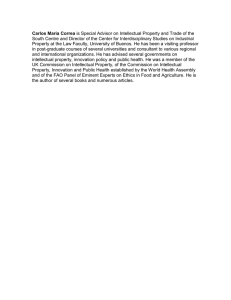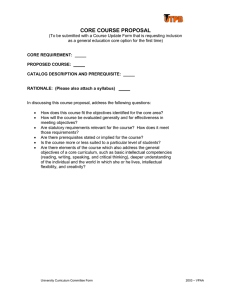Intellectual Property in the Netherlands Murat Tanriseven 1-3 December, 2010 WPNA meeting
advertisement

Intellectual Property in the Netherlands Murat Tanriseven 1-3 December, 2010 WPNA meeting Capital in the standard National Accounts (SNA 2008) …is from a knowledge perspective too limited • Current SNA coverage of intellecual property products (IPP): R&D (new), Mineral exploration, Software and databases, Artistic originals • Missing: Brand equity, Organizational innovations, Architectural and engineering designs, human capital (Corrado, Hulten & Sichel) SNA 2008 Asset boundary Requirements for an entity to be an asset: • Store of value • (series of) Benefits accruing to owner • Carrying forward value from one accounting period to another …brand names, non-technological (organizational) innovations, human capital? Source and Methods Sources: • R&D survey, Continuing vocational training surveys, national accounts data… Methods: • Perpetual Inventory (time series investment expenditure) • Service lives: R&D (9, 12, 15 years), Firm specific human capital (7-13). Summary of findings IPP’s in the Netherlands: Investments by asset type, current price levels billion euro 60 50 Organisational structure 40 Firm-specific human capital 30 Brand equity 20 Other innovative property Research an development 10 Software 0 Year Summary of findings Investments in intellectual property in the commercial sector * as a percentage of GDP, 2006 Netherlands Germa- France ny Italy Spain UK US percent 1. Computerized information 2. Innovative property 3. Economic competencies 1,2 1,4 4,8 0,7 3,6 2,8 1,4 3,2 3,3 0,6 2,2 2,2 0,8 2,8 1,9 1,6 3,2 5,8 1,6 4,4 5,5 Total investment 7,4 7,2 7,9 5,0 5,5 10,5 11,5 Sources: van Ark, Bart, Janet X. Hao, Carol Corrado and Charles Hulten (2009), van Rooijen-Horsten et al. (2008) * For the sake of international comparability we took the commercial sector and excluded also the health sector Growth accounting results • The contribution of intellectual property to output growth of 0.5 percentage points in 1996-2001 is as large as the contribution of other fixed assets; • Sharp decline in (among others) computer hardware and software investment growth rates due to the end of the internet hype led to a small contribution of intellectual property and also other fixed assets to output growth in 2002-2007; • In 1996-2001 and 2002-2007 intellectual property explains part of output growth leading to lower MFP changes as being the growth residual. • In 2009 the commercial sector invested 7 percent less in IPP. Concluding remarks • Intellectual property explains part of output growth (1996-2007) leading to lower MFP changes as being the growth residual; • Large differences between industries, the industry ‘financial and business activities’ is a dominant invester in intellectual property ; • The Netherlands invest a lot in economic competencies, compared to other countries; • R&D (technical innovation) does not tell the complete story of the knowledge economy Future work • Adapt concepts in an internationally harmonized way • Improvement of estimates • Further research on missing intellectual property products (e.g. architectural and engineering designs on own account, new product development costs in the financial industry)





